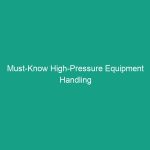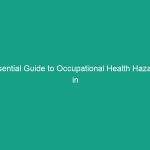Introduction
Good morning team! Today, we’re going to discuss an important topic that affects all of us in the workplace: sharp object handling. Understanding the essential sharp object handling guidelines can significantly reduce the risk of accidents and injuries. These practices not only keep you safe but also contribute to a more efficient working Environment.
Understanding Essential Sharp Object Handling Guidelines
So, what exactly are “Essential Sharp Object Handling Guidelines”? These guidelines are a set of Safety practices that aim to minimize Hazards associated with sharp objects in the workplace, such as knives, blades, and other cutting tools. Proper handling of these items is crucial, as improper use can lead to severe injuries, affecting your health and productivity.
Many employees might think accidents won’t happen to them, but statistics show that sharp object-related injuries are common. Understanding the risks and learning how to handle these tools correctly can make a significant difference.
Key Hazards, Risks, and Safety Considerations
When it comes to sharp objects, several key hazards and risks arise. These include:
- Cutting Injuries: The most obvious risk, which can lead to severe cuts, lacerations, or even amputation.
- Puncture Wounds: Sharp objects can easily penetrate skin, leading to infections if not treated promptly.
- Eye Injuries: Sharp objects can cause flying debris that may injure eyes, leading to long-term damage.
Ignoring safety protocols can result in real-world consequences, such as lost workdays, increased insurance costs, and a decline in team morale. It’s essential to recognize these hazards and take them seriously.
Best Practices, Procedures, & Actionable Advice
Now that we understand the risks, let’s discuss some Best Practices for handling sharp objects safely:
1. Always Use the Right Tool for the Job
Using the appropriate sharp object for the task can significantly reduce risks. For instance, use box cutters for opening packages instead of knives.
2. Keep Tools Sharp
Surprisingly, dull tools can be more dangerous than sharp ones. A dull blade requires more force, increasing the chance of slipping and causing injury. Regularly maintain and sharpen tools to ensure they operate effectively.
3. Use Protective Gear
Always wear appropriate Personal Protective Equipment (PPE), such as cut-resistant gloves and Safety Glasses, when handling sharp objects.
4. Maintain a Clean Workspace
Cluttered workspaces can lead to accidents. Keep work areas clean and organized to minimize risks.
5. Proper Storage
Store sharp objects in designated areas, such as toolboxes or sheathes, to prevent accidental contact when not in use.
6. Be Mindful of Your Surroundings
Always be aware of where others are when using sharp tools. Ensure no one is in close proximity to avoid accidental injuries.
Case Study
Consider a situation where an employee was using a box cutter to open a large shipment. The employee, distracted by a conversation, accidentally cut into their hand. This incident could have been avoided if the employee had followed proper handling Procedures, like focusing on the task at hand and ensuring they were using the right tool. Always be mindful and present when handling sharp objects.
Regulations, Standards, and Compliance
It’s vital to understand that there are Regulations and Standards in place to ensure Workplace Safety. For example, OSHA (Occupational Safety and Health Administration) has guidelines regarding the use of sharp tools. Compliance with these regulations is not just a legal obligation, but a moral one that protects you and your coworkers.
By adhering to these standards, we create a safer workplace, reducing the likelihood of accidents and injuries. Remember, safety is a shared responsibility.
Employee Engagement & Discussion
Let’s take a moment to open the floor for discussion. I’d like to hear from all of you:
- What safety challenges have you encountered related to sharp object handling?
- Can you share any experiences where proper handling made a difference?
Your input is invaluable, as it helps us learn from each other and improve our safety practices.
Conclusion & Key Takeaways
In summary, handling sharp objects safely is critical to maintaining a safe and productive work environment. Remember the following key points:
- Use the right tool for the job.
- Keep tools sharp and in good condition.
- Wear appropriate PPE.
- Maintain a clean and organized workspace.
- Store sharp objects properly.
- Be aware of your surroundings.
By applying these essential sharp object handling guidelines, you can help prevent accidents and create a safer workplace for everyone. Let’s prioritize safety and look out for one another.
Thank you all for your attention and commitment to safety today. Let’s make it a safe day!


